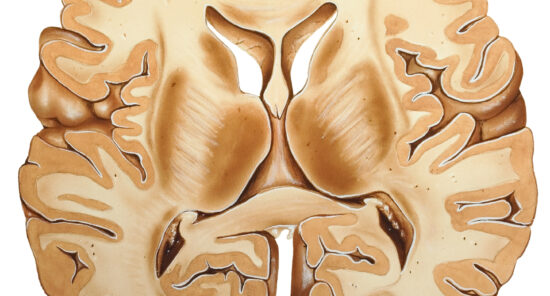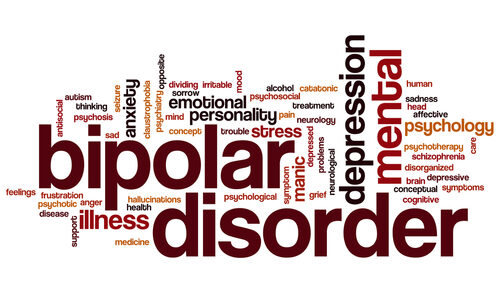Credit: Original article published here.A new study conducted by researchers at the Johns Hopkins Bloomberg School of Public Health found an association between common infections and poor cognitive performance. The research was published in Alzheimer’s & Dementia. Senior author and professor at the Bloomberg School’s Department of Mental Health, Adam Spira, PhD, stated: “The idea that common infections could contribute to cognitive decline and perhaps Alzheimer’s disease risk was once on the fringe and remains controversial, but due to findings like the ones from this study, it’s starting to get more mainstream attention.” Dr. Spira and his research team analyzed the antibody levels of five common pathogens which included: herpes simplex virus, cytomegalovirus (CMV), Epstein-Barr virus, varicella zoster virus, and Toxoplasma gondii. Mini-Mental State Examination (MMSE) and delayed verbal recall performance were evaluated in 575 adults aged 41 to 97 years who donated blood for testing as part of the Epidemiologic Catchment Area Study. Researchers employed multivariable-adjusted zero-inflated Poisson regression models to analyze the data. The results showed that having positive antibody tests for CMV (P =0.011) and herpes simplex virus (P =0.018) were individually linked to poorer performance on the MMSE. Additionally, the study found that having a greater
Credit: Original article published here.Researchers at Karolinska Institutet in Sweden have recently made a significant discovery that could pave the way for a simple and non-invasive screening procedure for Alzheimer’s disease (AD). The study, which was published in Alzheimer’s & Dementia: The Journal of the Alzheimer’s Association, shows that a type of sugar molecule known as bisecting N-acetylglucosamine glycan epitope is linked to tau protein, which is a key factor in the progression of advanced dementia and AD. The research team has previously established a correlation between the levels of glycan and tau protein in individuals with AD. However, these analyses were done on cerebrospinal fluid which is difficult to obtain and can be considered invasive. “The role of glycans, structures made up of sugar molecules, is a relatively unexplored field in dementia research,” Robin Zhou, medical student at Karolinska Institutet and lead author of the study, stated. Glycans are sugar molecules located on the surface of proteins that dictate the function and placement of these proteins in the body. By measuring blood glycan levels, the researchers found that individuals with matching levels of glycans and tau were over twice as likely to develop Alzheimer’s-type dementia. The team of researchers
Credit: Original article published here.In a recent study, published in Frontiers in Neurology, researchers examined cortical thickness in patients with obstructive sleep apnea (OSA) to assess brain structure changes related to excessive daytime sleepiness associated with OSA. The team used surface-based morphometry (SBM) to identify potential thinning of the cortex in a population of middle-aged, male patients. The study’s co-lead authors, Yezhou Li and Jing Wang, reported subjective daytime sleepiness was associated with a decrease in cortical thickness, potentially leading to cognitive impairment. The researchers also noted the Epworth Sleepiness Scale (ESS) score might be a functional clinical marker of brain injury in patients with OSA. Daytime Sleepiness May Mark Brain Degradation in OSA Between August 2020 and June 2021, investigators enrolled 61 male patients from a single sleep center who had newly diagnosed OSA and were aged 25 to 60 years. Polysomnography and structural MRI assessments were performed on each participant, and ESS score was used to identify patients with excessive daytime sleepiness. Notably, compared to patients without excessive daytime sleepiness, investigators found the cortical thickness of patients with OSA and sleepiness was markedly reduced in the left temporal lobe, frontal lobe, parietal lobe, and bilateral pre- and postcentral gyri
Credit: Original article published here.A recent study conducted by researchers at Mass General Brigham found that women are more likely to develop Alzheimer’s disease (AD) than men, with two-thirds of the AD population being female. The study design was cross-sectional in nature and focused on the relationship between the risk of AD, sex, age of onset of menopause, and hormone therapy (HT). The results, published in JAMA Neurology, suggested that early age at menopause may be a risk factor for AD as well as dementia. Rachel Buckley, PhD, from the Department of Neurology at Massachusetts General Hospital (MGH) and senior author of the study commented, “HT is the most reliable way to ameliorate severe menopause symptoms, but over the last few decades, there has been a lack of clarity on how HT affects the brain.” Dr. Buckley and coresearchers analyzed participants enrolled in the Wisconsin Registry for Alzheimer Prevention who underwent 18F-MK-6240 and 11C-Pittsburgh compound B positron emission tomography (PET) scans. Then the researchers evaluated the relationship between menopause and HT use and regional tau PET in seven regions of the brain that show sex differences across temporal, parietal, and occipital lobes. The primary exposures included premature menopause, early menopause,
Credit: Original article published here.A study conducted by researchers at Duke-NUS Medical School in Singapore has found that early morning classes in universities may be detrimental to academic performance. The research, recently published in Nature Human Behaviour, analyzed data from student Wi-Fi connections and log-ins to university and digital learning platforms, as well as activity data from specialized sensing watches to track the attendance and sleep patterns among tens of thousands of university students. Sleep scientists examined the day and night patterns of digital learning platform logins for 39,458 students to investigate whether early morning classes were correlated with waking up earlier and receiving less sleep. Lastly, they assessed the academic performance of 33,818 students and the number of morning classes they were enrolled in to evaluate the potential impact on their grade point average. The results of the study revealed classes starting at or prior to 8:00 a.m. were linked to lower attendance levels, with many students often sleeping past the start of classes. When students did attend these early classes, they lost around an hour of sleep, which negatively affected their academic performance. Additionally, the researchers found that having morning classes on more days of the week was
Credit: Original article published here.A new study shows that people with bipolar disorder (BD) have deviations in the fronto-limbic network of their brains that may explain cognitive and emotional dysfunctions. The findings were reported in JAMA Psychiatry. “Individuals with (BD) experience cognitive and emotional dysfunctions. Various brain circuits are implicated in BD but have not been investigated in a meta-analysis of functional magnetic resonance imaging (fMRI) studies,” the investigating authors wrote. In an effort to assess investigate the brain functioning of individuals with BD compared with healthy control individuals in the domains of emotion processing, reward processing, and working memory, researchers conducted a systematic review and meta-analysis comprised of 49 functional magnetic resonance imaging studies consisting of just under 1,000 individuals with BD, and 1,027 healthy controls. The findings showed that compared with healthy control individuals, people with BD exhibited amygdala and hippocampal hyperactivity and hypoactivation in the inferior frontal gyrus during emotion processing, hyperactivation in the orbitofrontal cortex during reward processing, and hyperactivation in the ventromedial prefrontal cortex and subgenual anterior cingulate cortex during working memory, which may explain emotional and cognitive irregularities. “This systematic review and meta-analysis revealed evidence for activity disturbances in key brain areas involved in
Credit: Original article published here.Dementia is a devastating disease, affecting millions of people worldwide. With no cure for dementia, researchers are looking for ways to reduce the risk of developing the disease. In recent years, researchers have focused on lifestyle factors that may affect dementia risk, including one’s diet. A recent study published in BMC Medicine reported that following a traditional Mediterranean diet may reduce the risk of developing dementia. The Mediterranean diet emphasizes the consumption of fruits, vegetables, legumes, nuts, seeds, whole grains, fish, and olive oil, and limits the intake of processed foods, red meat, and dairy products. Historically, the diet has been associated with a reduced risk of several chronic diseases such as cardiovascular disease, type 2 diabetes, and cancer. The study analyzed data from the UK Biobank and included data from 60,298 individuals who had completed a dietary assessment and were followed up for an average of 9.1 years. During the study period, a total of 882 cases of dementia were reported. The results of the study suggested that individuals who had a higher adherence to a Mediterranean diet had up to 23% lower risk of developing dementia compared with those who had a lower adherence
Credit: Original article published here.Insomnia has been associated with worse outcomes in patients with chronic obstructive pulmonary disease (CPOD); however, the impact of concurrent insomnia on healthcare utilization and costs related to COPD is unknown, according to a study by Faith S. Luyster and colleagues. After their investigation, the researchers reported insomnia was associated with increased outpatient visits, hospitalizations, fills for corticosteroids and antibiotics, hospitalization lengths, and hospitalization costs within 12 months of insomnia diagnoses in patients with COPD. The data were published in Respiratory Research. Insomnia Worsens 1-Year Utilization and Cost Outcomes The study’s authors enrolled a retrospective cohort of veterans with COPD from the national Veterans Affairs administration database from 2012 to 2017. Insomnia was defined as an insomnia diagnosis or a prescription of over 30 doses of a sedative-hypnotic medication within 1 fiscal year. The primary end points of the study were resource utilization and costs related to outpatient visits and hospitalizations within 1 year of indexing. Patients without insomnia had their COPD-related resource utilization estimated based on prescription fills of corticosteroids and antibiotics, and outpatient visits or hospitalizations with a primary diagnosis of COPD. According to the authors, out of 1,011,646 patients with COPD (96% male; mean
Credit: Original article published here.The novel therapy intervention known as practitioner-supported mindfulness-based cognitive therapy self-help (MBCT-SH) is better for treating mild to moderate depression than the standard practitioner-supported cognitive behavioral therapy self-help (CBT-SH), according to a new study published in JAMA Psychiatry. Depression impacts almost 11% of people worldwide. It very often recurs, and comes with deleterious personal and economic consequences. Despite the effects of depression, treatment disparities exist whereby many people suffering with the disease fail to procure evidence-based treatments, making it mission-critical to develop effective, and scalable interventions. The Current Mode of Treating Depression Currently, CBT-SH is the recommended mode of treatment for people with mild to moderate depression. This intervention, according to the researchers, “explores and evaluates the interrelationships between thoughts, feelings, physical sensations, and behaviors in the maintenance of depression, along with the historical antecedents of unhelpful thinking patterns.” While specialist CBT is regarded as effective, the self-help practice is less accepted, and comes with a high dropout rate. Ergo, alternatives to CBT-SH to treat depression are necessary. MBCT, which is an in-person group program which “involves deliberately bringing nonjudgmental awareness to present-moment experiences (eg, thoughts, feelings, physical sensations, behavioral urges),” can be honed through mindfulness
Credit: Original article published here.In the phase 3 REST-ON study, researchers evaluated the safety and efficacy of FT218, a novel once-nightly sodium oxybate (ON-SXB) formulation, in improving sleep quality in patients with narcolepsy. Authors noted that FT218 uses an investigational, extended-release formulation to allow for once-daily SXB dosing rather than twice-nightly. According to the study’s lead author, Clete A Kushida, treatment with FT218 significantly improved participants’ narcolepsy symptoms compared with placebo, and had a safety profile consistent with existing two-nighttime dose SXB treatments. The findings were published in Sleep. Once-Nightly Dosing WIth Novel Sodium Oxybate Formulation A total of 212 patients received at least 1 study dose, 107 in the ON-SXB group and 105 in the placebo group. ON-SXB was assessed at doses of 6, 7.5, and 9g. The 3 primary end points were change from baseline in mean sleep latency on the Maintenance of Wakefulness Test, Clinical Global Impression-Improvement rating, and weekly cataplexy attacks. Reportedly, all 3 doses of ON-SXB yielded clinically meaningful improvements compared with placebo across the 3 primary end points and Epworth Sleepiness Scale values (P<.001). Authors specified that the ON-SXB 9g group had a mean increase in sleep latency of 10.8 minutes versus 4.7 minutes










